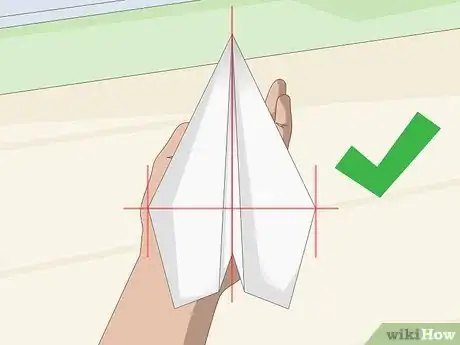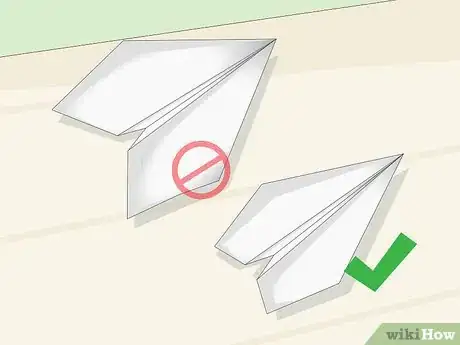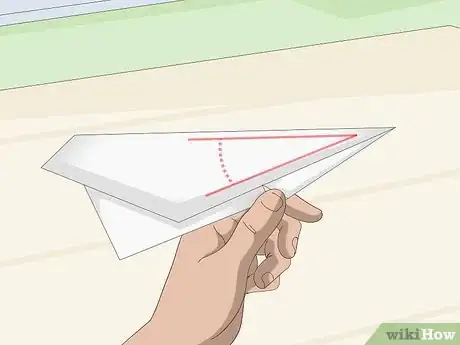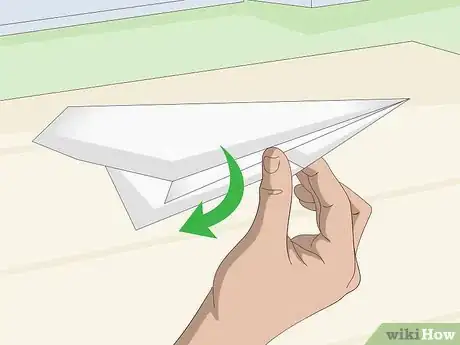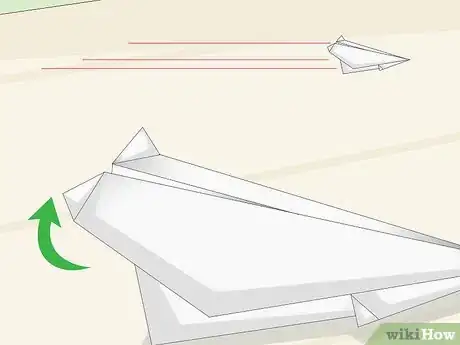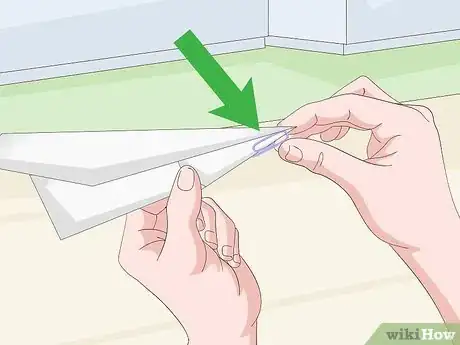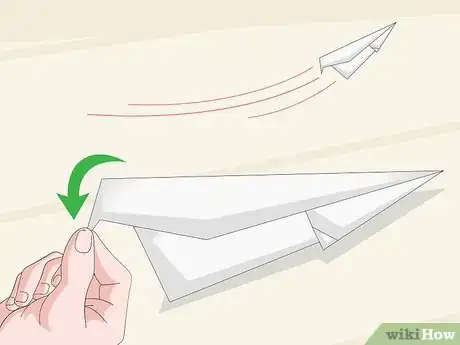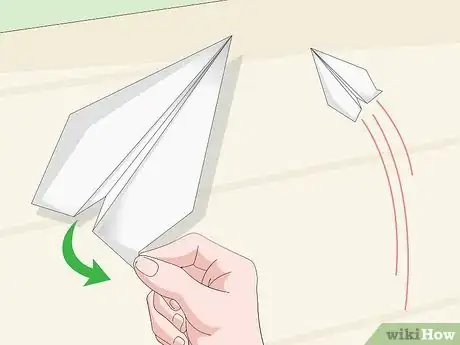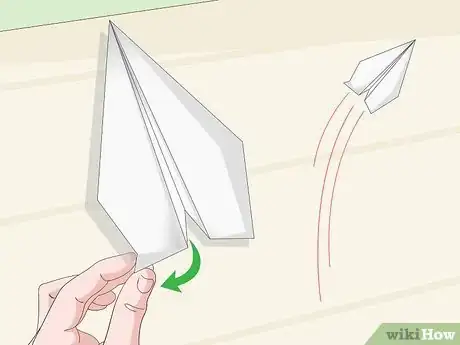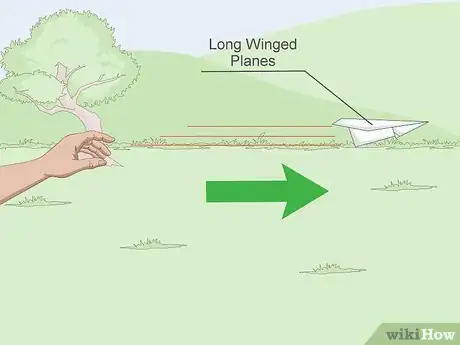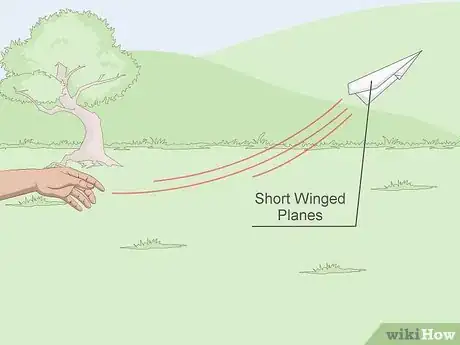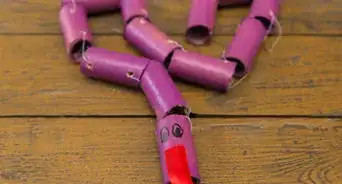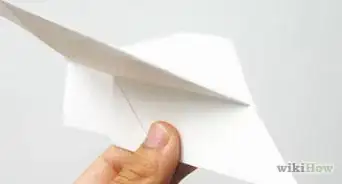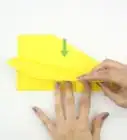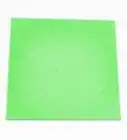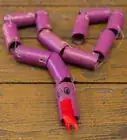This article was co-authored by wikiHow Staff. Our trained team of editors and researchers validate articles for accuracy and comprehensiveness. wikiHow's Content Management Team carefully monitors the work from our editorial staff to ensure that each article is backed by trusted research and meets our high quality standards.
wikiHow marks an article as reader-approved once it receives enough positive feedback. This article has 11 testimonials from our readers, earning it our reader-approved status.
This article has been viewed 339,421 times.
Learn more...
Transforming a spare piece of paper into a flying machine feels amazing. Your plane though may crash or stall before it makes significant progress. Knowing how to make a basic paper airplane doesn’t guarantee that the plane will fly, but by understanding the plane’s gravity and lift, you can make any plane fly better. Make adjustments by making the wings even, elevated, and bent to compensate for errant flight patterns.
Steps
Refolding the Plane
-
1Make sure the wings are symmetrical. Often, during the process of making folds, you crease the page, make the wing length uneven, and so on. Unfold your plane and refold it again. If there’s an extra crease on one side, add it to the other. That way, the wind will hit the plane the same way on both sides.[1]
- You can also cut off uneven and excess bits of paper, but this is risky since you won’t be able to go back.
-
2Make the wings shorter. The aspect ratio of the wings affect flight. Long, wide wings are good for gliding but have to be thrown gently. Short, stubby wings are usually better because you can throw the plane faster and angle it more upwards. Refold the wings according to your needs.Advertisement
-
3Angle the wings. A standard airplane needs wings that point upwards. If your wings are flat or upside down, redo them. Wings angled upwards are called “dihedral” and give your plane stability. Lift the wings upwards so that the wing tips are above the rest of the plane.[2]
-
4Add fins to complicated designs. Fins are small folds you make on the wings. The paper doubles over itself when you do this. Take the edges of the wings and fold them downwards and over. This is the fin, and the fold should be parallel to the length of the plane. These fins can help stabilize and strengthen some planes.[3]
- Fins are useful in more complicated designs. For standard dart planes, they should be avoided since they will slow the plane.
Improving Flight Stability
-
1Bend the back end of nosediving planes upwards. Stable paper airplanes fly farther and faster. Paper airplanes typically benefit from adding what’s known as up elevator. Take the back end of the airplane, which on a standard dart-shaped plane is the wing tips, and use your finger to bend them upwards a little.
- This counterbalances the weight in the nose of your plane.
-
2Weigh down the nose on stalling planes. Most planes also benefit from a little weight in the nose. This helps balance the plane so it doesn’t have a tendency to fly straight up. Cover the nose in a layer or two of tape or add a paper clip. Test out out the plane and make adjustments as necessary.
- Most airplanes are better off being slightly nose heavy rather than slightly tail heavy.
- Heavier planes are better at withstanding outdoor flight.
-
3Bend the back ends downwards on stalling planes. Bending the wing tips downwards is only useful for planes that try to fly upwards when launched. Use your fingers to bend them down slightly. Try throwing the plane again. If this isn’t enough to balance it, you can try adding more weight to the nose of the plane.
-
4Bend right-leaning planes to the left. Slightly bend the end of the tail to the left. If your tail has two sides, bend the left side up and the right side down. When the air hits the bends, the plane will change the plane’s direction.[4]
-
5Bend left-leaning planes to the right. If your plane has a single, vertical edge for a tail, bend it to the right. Otherwise, pull the right side up and the left side down. These bends will correct the airflow to cause a more stable flight.
Adjusting Your Throw
-
1Hold the fuselage. The fuselage is the bottom part of the plane. In most paper airplanes, this is where the fold separates the two sides. You’ve worked to balance your plane, so grip the center of the fuselage with your fingertips. This is where the plane gets a lot of its stability.
-
2Throw thin, long-winged planes gently. More delicate planes are better gliders. A rough launch will damage them and ruin their flight trajectory. Bring your wrist forward in a pushing motion. Keep the plane level with the ground.
-
3Throw short, stout planes upwards. Planes with short wings function better with a hard launch. Angle your plane upwards. Use the same pushing motion with your hand, but apply more force. If the plane is a dart, it will stabilize as it descends.[5]
- Non-dart glider planes should be throw upwards gently with a pushing motion.
Community Q&A
-
QuestionIs there a way to keep the nose of my paper plane from getting bent?
 Community AnswerTry putting a paper clip at the nose to prevent it from getting bent. This can also help with how far the plane flies.
Community AnswerTry putting a paper clip at the nose to prevent it from getting bent. This can also help with how far the plane flies. -
QuestionHow do I make my airplane go up?
 Community AnswerIf you have a short plane, it's usually better to throw it upwards and let it glide down. You can make the plane angle upwards by bending the back ends of the plane upwards. If your plane goes too far up, this ends up limiting how far it can glide.
Community AnswerIf you have a short plane, it's usually better to throw it upwards and let it glide down. You can make the plane angle upwards by bending the back ends of the plane upwards. If your plane goes too far up, this ends up limiting how far it can glide. -
QuestionHow do I make my paper airplane fly straight?
 Community AnswerYou cut squares into the back of the wing (not too big) and use them like the flaps on the side of proper aircraft.
Community AnswerYou cut squares into the back of the wing (not too big) and use them like the flaps on the side of proper aircraft.
Warnings
- Don't throw a paper airplane at a person or pet. The nose can hit someone in the eye.⧼thumbs_response⧽
References
- ↑ http://www.tested.com/art/makers/43644-how-to-fold-and-tweak-a-great-paper-airplane/
- ↑ http://www.popularmechanics.com/flight/how-to/a7561/the-secrets-of-the-world-record-setting-paper-plane-7013184/
- ↑ http://paperaeroplanes.com/blog/
- ↑ http://www.tested.com/art/makers/43644-how-to-fold-and-tweak-a-great-paper-airplane/
- ↑ http://splash.abc.net.au/home#!/media/2239374/How-to-throw-your-paper-plane
About This Article
The easiest way to make your paper airplane design better is to fold the wings so they’re shorter. Bend the wings so the tips are pointing up instead of down to give your paper airplane more lift. You can even give the wings on your paper airplane fins if you want your design to be complex. Keep reading for more ways you can enhance your paper airplane design, like using tape and a paper clip to make it fly straighter!
